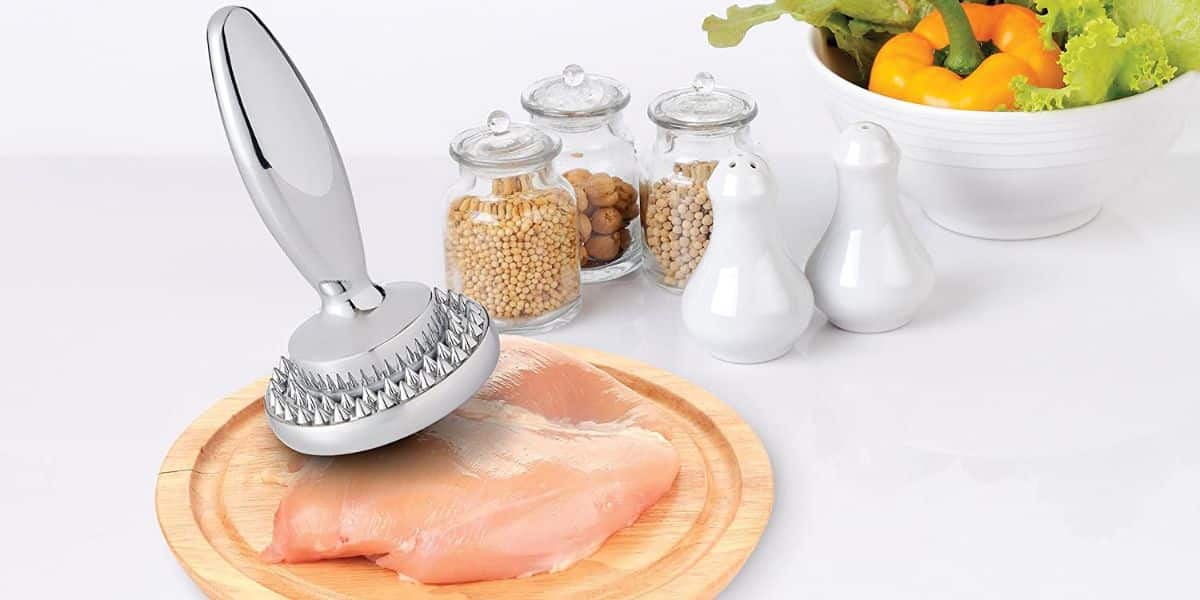Shocking Truth: Why Does Beating Meat Tenderizer It? Life-Changing Insights!
Written By James MorganThe art of barbecue is filled with a myriad of techniques and secrets. One of the most intriguing questions that often pops up is why does beating meat tenderizer it? This question might sound perplexing at first, but for barbecue enthusiasts, the search for the perfect tender, juicy meat is endless. Understanding this process is not only fascinating but also essential for anyone hoping to elevate their grilling game.

Why Beat the Meat?
At its core, beating meat is all about breaking down its fibers and connective tissues. When you ask yourself, why does beating meat tenderizer it the answer lies in the structural makeup of meat itself. Meat is made up of muscle fibers and connective tissues that can be tough, especially in certain cuts. Using a meat mallet or tenderizing tool helps to physically break down these tough components.
This process is particularly vital for tougher cuts of meat such as flank steak or pork shoulder. By beating the meat, youre essentially mimicking the natural enzymatic breakdown process that usually happens over a long period of time, thereby making the meat tender in a much shorter time span.

The Science Behind Tenderization
The science behind why does beating meat tenderizer it is deeply rooted in the chemistry and biology of muscle tissues. Muscle fibers are held together by connective tissues known as collagen and elastin. These connective tissues can be quite tough, making the meat chewy. By beating the meat, youre breaking down these connective proteins, allowing the meat fibers to relax and become more tender.
Additionally, this process also helps in the absorption of marinades and spices. When the meat is beaten, it creates tiny pockets and pathways in the muscle fibers, allowing for better penetration of flavors. For example, you can learn about the different types of marinades and their effect on meat from this article.

Tools for Tenderizing
Meat Mallets
One of the most common tools for tenderizing meat is the meat mallet. These mallets come with different head designs, each serving a unique purpose. The flat side of the mallet is perfect for pounding the meat evenly, while the textured side breaks down tougher muscle fibers. It's an age-old tool that has stood the test of time for a good reason.
Needle Tenderizers
Needle tenderizers are another excellent option. These tools are equipped with multiple small needles that penetrate the meat, cutting through tough tissues. This method not only tenderizes but also makes the meat more porous, allowing for better marinade absorption. For more detailed insights, you can read about how to use a needle meat tenderizer.
Chemical Tenderizers
Chemical tenderizers often contain natural enzymes like bromelain (from pineapples) or papain (from papayas). These enzymes break down collagen and muscles at the molecular level, effectively tenderizing the meat without manual effort. If you are interested in what these chemical tenderizers contain, check out what ingredients are in meat tenderizer.

Practical Tips for Tenderizing Meat at Home
Choose the Right Cuts
Not all meat benefits equally from tenderizing. Cuts like flank steak, brisket, and pork shoulder benefit significantly from beating. These cuts are naturally tougher and require the extra effort to break down the muscle fibers.
Use Marinades
Marinades are a great way to tenderize meat. Acidic ingredients like vinegar, lemon juice, and yogurt help in breaking down proteins. Marinating the meat for a few hours before grilling can make a big difference.
Rest the Meat
Resting is crucial after tenderizing. Allowing the meat to rest for about 30 minutes before cooking can help in reabsorbing juices and making it more tender.
The Benefits of Tenderizing Meat
Tenderizing meat has its fair share of benefits, making it a go-to technique for barbecue enthusiasts. When you tenderize meat, you get a more consistent texture and enhanced flavors. The process also increases the meat's surface area, allowing for better grilling and caramelization. Plus, who wouldnt want to bite into a succulent piece of meat thats bursting with flavors?
The Pitfalls to Avoid
While tenderizing is an excellent technique, there are pitfalls you should avoid. Over-tenderizing can ruin the meats texture, making it mushy. Additionally, using too much force can tear the meat, affecting its appearance and overall quality.
For an in-depth guide on avoiding such pitfalls, read about what makes a good meat tenderizer.
Real-Life Barbecue Stories
Many barbecue enthusiasts swear by the technique of beating the meat. John, a seasoned griller, recalls his first attempt at tenderizing a tough cut of steak. I couldnt believe the difference it made. The meat was so tender and flavorful; it was like night and day, he said. Similarly, many others share their success stories, emphasizing how this technique has transformed their grilling experiences.
Frequently Asked Questions (FAQ)
1. Why does beating meat tenderize it?
Beating meat breaks down muscle fibers and connective tissues, making it tender by mimicking natural enzymatic breakdown processes.
2. What tools are best for tenderizing meat?
Meat mallets, needle tenderizers, and chemical tenderizers are effective tools for tenderizing meat, each with its unique benefits.
3. Can all types of meat be tenderized?
Not all types of meat benefit equally from tenderizing. Tougher cuts like flank steak and pork shoulder benefit more from this technique.
As an Amazon Associate, I earn from qualifying purchases.
As an Amazon Associate, I earn from qualifying purchases.



